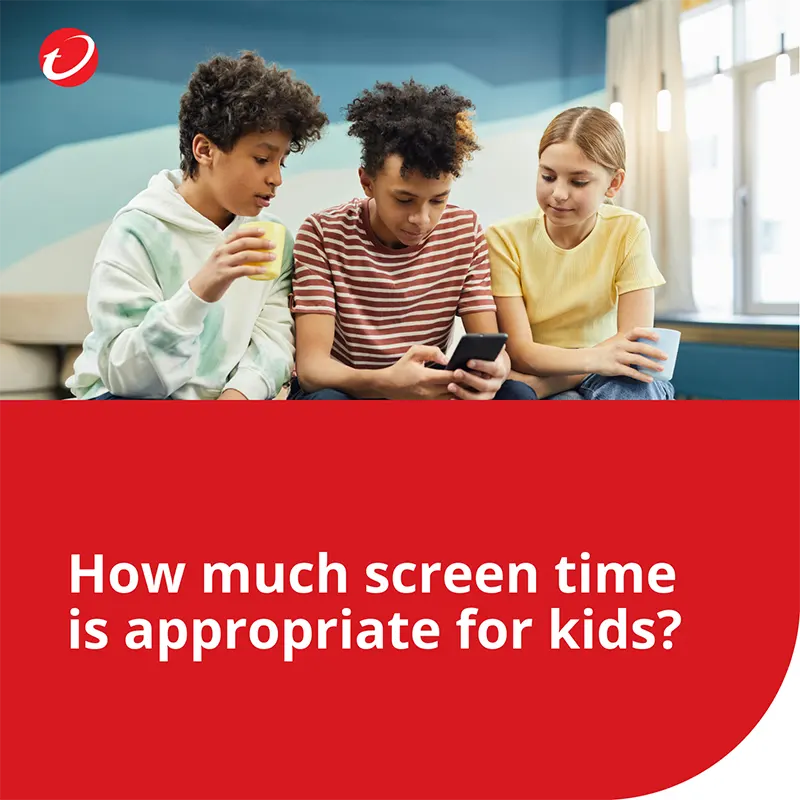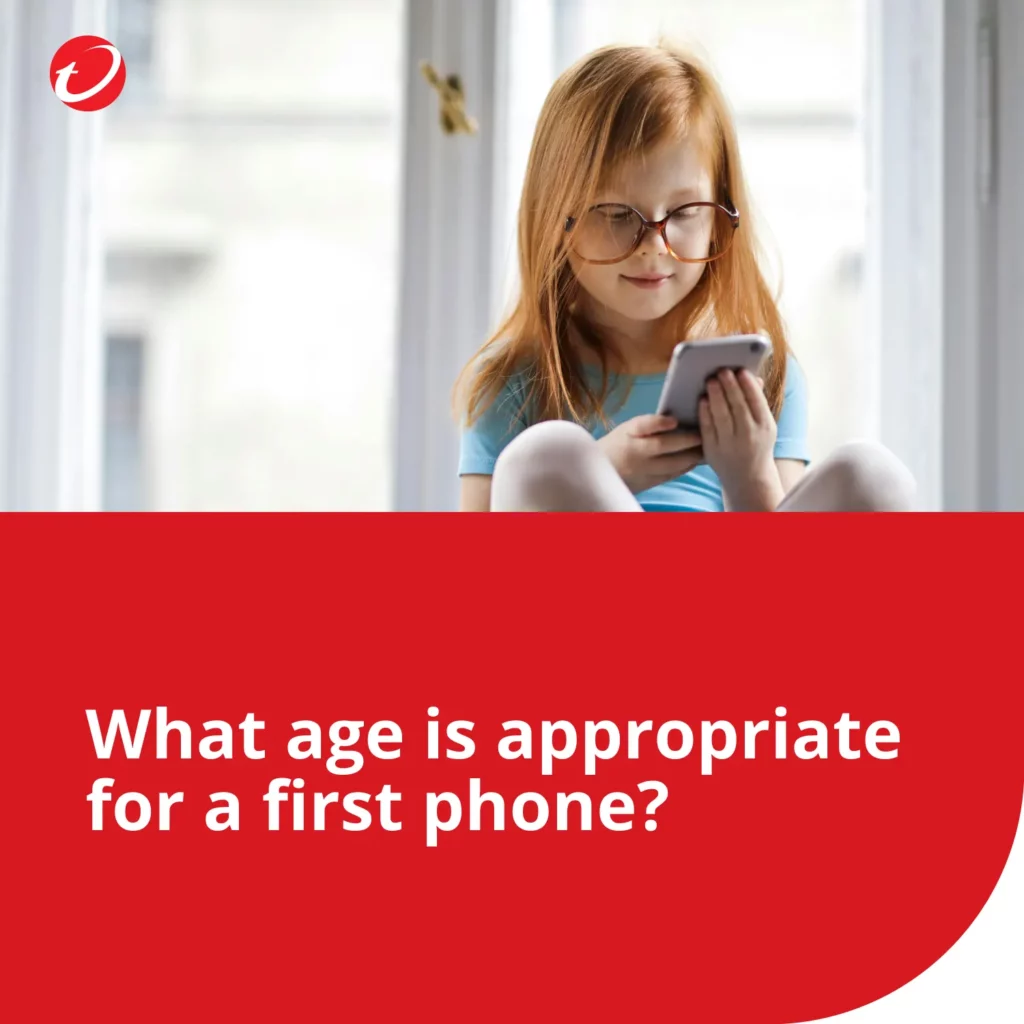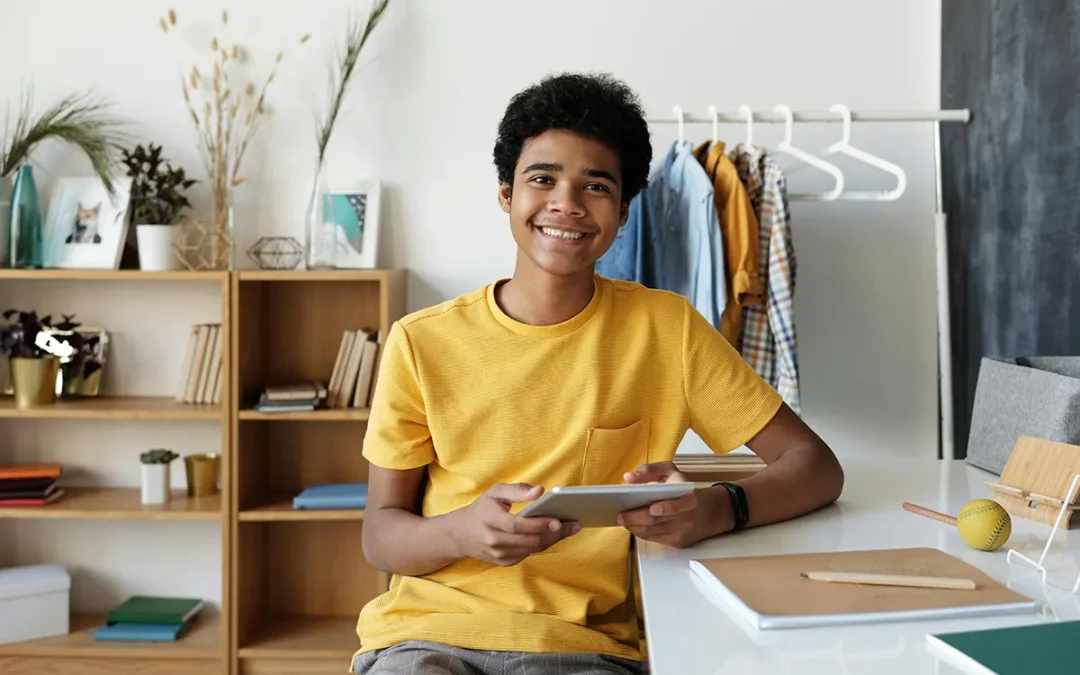Digital Wellness Day was established in 2020 by the Digital Wellness Institute to raise awareness about the significance of digital well-being and to help people flourish in a digital world. This year, on May 3, we will celebrate the fifth annual Digital Wellness Day, joining 10.7 million others in 64 countries.
Parents around the world worry about their children’s digital wellness because of the increasing amount of time they seem to spend online. To mark Digital Wellness Day, we decided to answer seven of the most commonly asked questions from parents who have attended our free internet safety webinars.

Question #1: How much screen time is appropriate for children, and does it vary between age groups?
The appropriate amount of screen time for children does vary by age group. For children under four, the World Health Organization (WHO) recommends the following guidelines:
- Children under 2 years: No screen time is recommended.
- Children 2 to 3 years: Sedentary screen time (watching TV or videos, playing computer games, etc.) should be limited to no more than one hour per day.
- Children 3 to 4 years: Sedentary screen time should be limited to no more than one hour per day.
For children over four years old, it is generally recommended to establish consistent limits on screen time to ensure it does not interfere with sleep, physical activity, and other essential behaviors. The focus should be on promoting a healthy balance between screen time and other activities that contribute to overall well-being.
Question #2: Is all screen time equal? If my child uses their device for homework does that count as screen time?
A few decades ago, “screen time” mainly referred to time spent watching TV. However, with the proliferation of screens in today’s world and the necessity of using devices for various purposes beyond recreation, defining “screen time” has become increasingly difficult.
Nowadays, not all screen time is equal because the content and context of screen use can vary widely. Screen time used for educational purposes, such as completing homework or engaging with educational apps, can have different effects compared to recreational screen time, such as watching videos or playing games.
Using a device for homework is still considered screen time because it involves interacting with a screen. However, the educational value of this screen time can make it more beneficial than recreational screen time. It provides an opportunity for learning and development, which can be valuable for a child’s academic progress.
Ultimately, it’s all about encouraging your child to spend quality time online and to build healthy habits online, and Trend Micro Cyber Academy’s Healthy Habits episode can teach your child everything they need to know about how to do that.

Question #3: What are the potential effects of excessive screen time on children’s health?
Excessive screen time can have various potential effects on children’s health. Some of these effects include:
- Health issues: Prolonged screen time can lead to a sedentary lifestyle, which is linked to obesity and other health issues. It can also contribute to poor posture and eyestrain.
- Sleep disturbances: Excessive screen time, particularly before bedtime, can disrupt sleep patterns, leading to difficulties falling asleep and poor sleep quality.
- Social impact: Excessive screen time can reduce face-to-face interactions and social skills development, leading to feelings of isolation and loneliness.
It is important for parents to monitor and limit their child’s screen time to mitigate these potential effects and promote a healthy balance in their lifestyle.

Question #4: How can I limit my child’s screen time?
You can limit your child’s screen time using various parental control apps and features. For Apple devices, you can use Screen Time, which allows you to set time limits for apps, schedule downtime, and manage content and privacy restrictions. For Android devices, Google Family Link is a great option, offering similar features to limit screen time and monitor app usage. However, there is a wide range of parental control apps available, so feel free to research online and choose the one that best fits your needs.


Question #5: How can I encourage a healthy balance between screen time and other activities for my children?
Other than limiting screen time by using one of the apps mentioned above, you can encourage a healthy balance between screen time and other activities by implementing the following strategies:
- Provide offline alternatives: Focus on encouraging children to take part in offline activities that you know they enjoy. This can be board games, puzzles, arts and crafts, or whatever else they love to do. This will help them find joy and fulfillment outside of screen time.
- Lead by example: Model healthy screen habits by limiting your own screen time and engaging in other activities. This can help reinforce the importance of balance to children.
- Create screen-free zones: Designate certain areas of the home, such as bedrooms and dining areas, as screen-free zones to promote family interaction and reduce screen time.
- Encourage physical activity: Encourage children to participate in physical activities, such as sports or outdoor play, to promote physical health and reduce sedentary screen time.
Question #6: What is the appropriate age to buy my child a phone? iPhone or Android?
The appropriate age to buy your child a phone can vary depending on your child’s maturity level, needs, and your family’s circumstances. Some parents choose to wait until their child is a teenager before buying them a phone, while others may feel comfortable giving them a phone at a younger age for safety or communication purposes.
When deciding between an iPhone or Android, consider factors such as cost and features, but also the fact that it can be beneficial to match the operating system of your phone with your child’s because parental control apps often work best when they have the same operating system as you do. Matching operating systems can simplify the setup and management of parental controls, making it easier to monitor and manage your child’s device usage.
Owning a device is a privilege that comes with great responsibility. Building trust with your child is key to helping you decide when the time is right. After all, you know them best.


Question #7: I don’t understand half the apps and games that my child uses and it worries me. What should I do?
Download the apps your child uses to explore and learn more about them. Doing so can provide valuable insights into their features and functionality. Additionally, many apps have developed in-depth guides for parents and caregivers, such as this one for Instagram, which offers safety feature explanations, advice on discussing the app with your child, and more.
You can also ask your child to show you how they use these apps, which can be a great way to bond and learn about their online activities. By familiarizing yourself with these apps, you can better understand your child’s digital world and help guide them in using these apps responsibly.
Take our poll question
Trend Micro Internet Safety Webinars & More Info
As part of our Internet Safety for Kids and Families initiative, Trend Micro regularly hosts internet safety webinars for parents and teachers around the world. These completely free virtual events cover a wide range of topics, including managing screen time, using the internet safely, protecting online privacy, and lots more. Interested in joining? Click here to sign up.
For more information about how to help children digitally flourish, the Digital Wellness Lab is a great resource, specifically its Family Digital Wellness Guide.
Feature photo from Julia M. Cameron on Pexels
Avril Ronan is Global Program Manager of the Internet Safety for Kids and Families Program at Trend Micro. Avril is best known for working in community; engaging students, parents, educators and senior citizens in the conversation about online safety. The ultimate goal of each conversation is to empower people to be online in safe, responsible and successful ways. As a regular public speaker, Avril collaborates with academia, law enforcement, industry and government having coordinated and delivered programs to date around the world such as What's Your Story?, Cyber Academy (now in 19 languages), and the #StayAtHome
Webinar Series.
